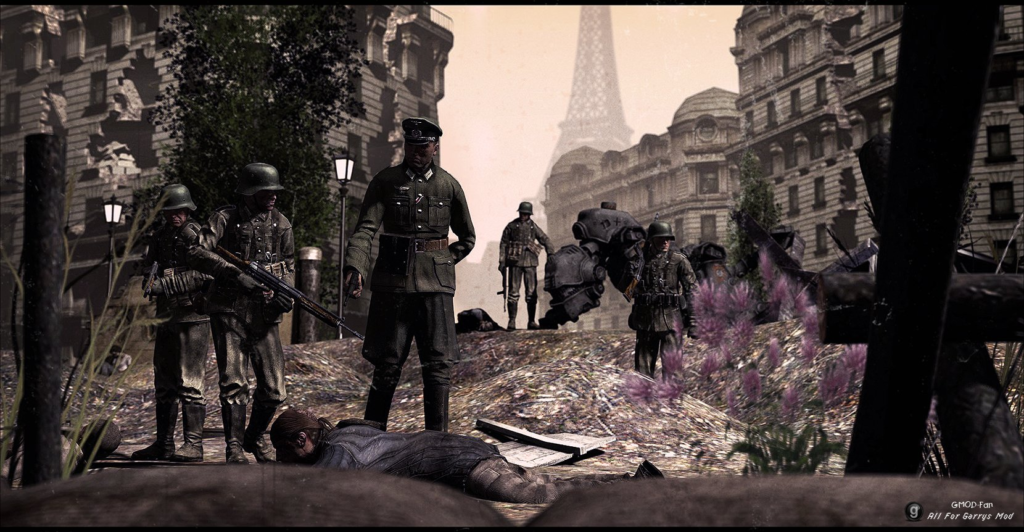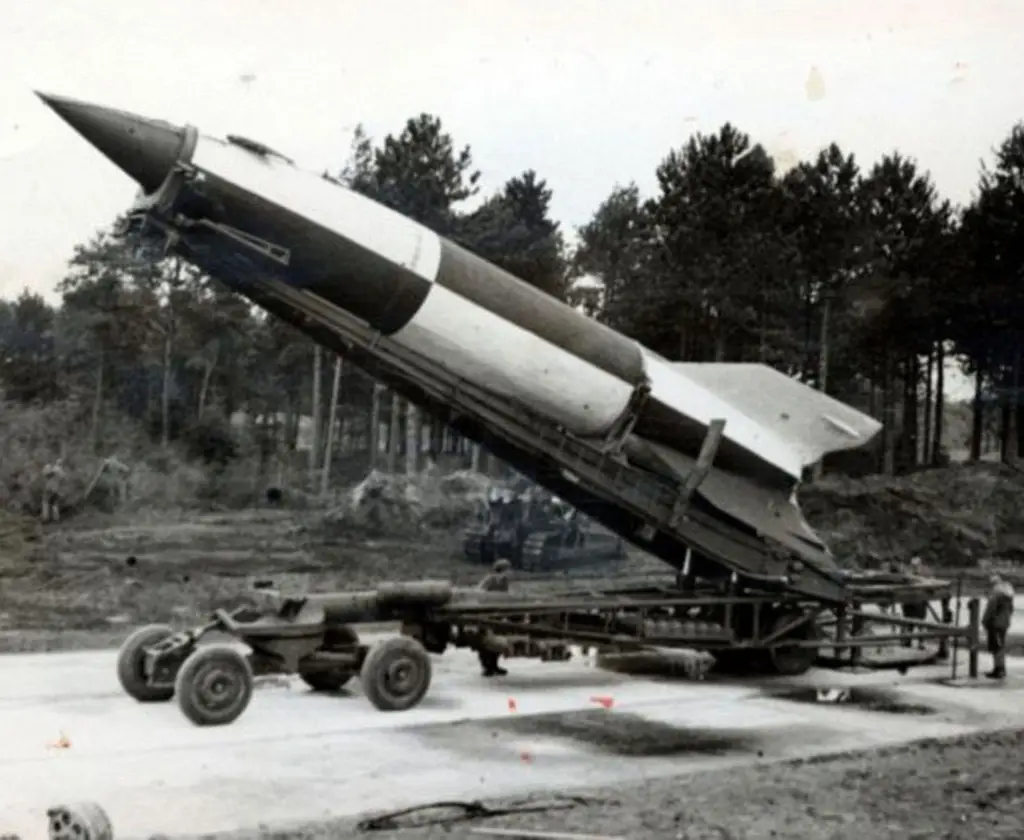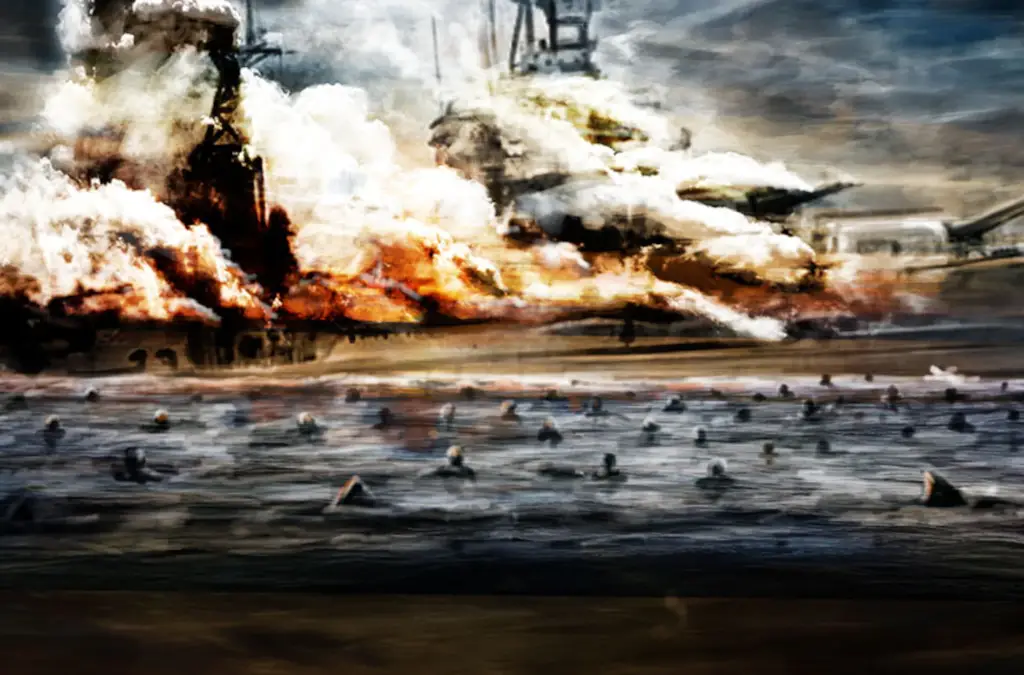Stunning and Unforgettable: 15 Amazing Facts about WWII
“World War II was a global conflict that lasted from 1939 to 1945, involving the majority of the world’s nations, including all of the great powers. It was one of the deadliest conflicts in human history, with an estimated 60 million fatalities worldwide. The war had far-reaching effects, changing the political, economic, and social structures of countries and leading to the emergence of the United States and the Soviet Union as superpowers.
In this article, we delve into some of the most fascinating and captivating aspects of the war. From secret weapons to daring raids, from the bravery of soldiers to the atrocities of the Holocaust, these fifteen facts offer a unique perspective on the events that shaped the world as we know it today. Whether you are a history buff or simply looking to expand your knowledge, these insights will leave you with a deeper understanding of one of the most significant events of the 20th century.”
#1 Hitler was a vegetarian and had only one testi*le.
Adolf Hitler, the leader of Nazi Germany, has been the subject of many rumors and myths. One of the most popular myths is that Hitler was a strict vegetarian, but it is not clear if this was true throughout his entire life. Some sources claim it was for health reasons, while others say it was for ethical or political reasons.

Another widely spread myth about Hitler is that he only had one testic*e. This claim is often cited as propaganda during World War II but has no credible evidence. It is not mentioned in any of Hitler’s medical records and sources that claim this are unreliable. The accuracy of this rumor has been discredited by historians and medical professionals.
#2 The first concentration camp was established in 1933 by the Nazis in Dachau, Germany.
The first concentration camp established by the Nazis was Dachau, located near Munich, Germany in 1933. It served as a model for all subsequent concentration camps during the Holocaust and held political prisoners, Jews, homosexuals, Romas, disabled individuals, and others deemed as “undesirables” by the Nazi regime.

The conditions were brutal, with prisoners subjected to forced labor, malnutrition, and medical experiments, leading to the death of thousands. Dachau was liberated by American forces in April 1945, revealing the horrors of the camp and solidifying the need for accountability for the atrocities committed during the Holocaust. More about Dachau Concentration Camp.
#3 The Japanese balloon bombs of WWII were the only air attack on mainland US.
The Japanese balloon bombs launched during World War II represent the only air attack on the continental United States in history. These bombs were part of a military campaign by Japan to attack the US mainland and were carried by large, high-altitude balloons that floated across the Pacific Ocean.

The balloons carried explosive devices and were intended to start forest fires in the western US and cause panic and disruption. Although the campaign was largely ineffective, it did result in a small number of casualties and represents a unique episode in the history of warfare.
#4 The Soviet Union had 26 million casualties, the highest of any country in WWII.
The Soviet Union suffered greatly during World War II, with an estimated 26 million casualties, more than any other country. The casualties included both military personnel and civilians and were a result of both combat operations and the German occupation.

The war had a devastating impact on the Soviet people and the country’s infrastructure, leading to significant loss of life and widespread destruction. The Soviet Union’s contributions to the defeat of Nazi Germany were significant, and its sacrifices and losses in the war are remembered and honored in modern Russia.
#5 Continued Fighting by Isolated German Soldiers Post-WWII
After World War II officially ended in 1945, many German soldiers were still fighting in isolated pockets and were not officially informed that the war was over. This was due to a variety of factors such as poor communication, the remote location of some units, and the determination of some soldiers to continue fighting even after the surrender of the German government.

The fighting continued in these pockets until the early 1950s, long after the war had officially ended, and many German soldiers only learned about the end of the war through their captors or other means. This delayed end to the fighting highlights the complexities of ending a war and the difficulties in communicating such information to all parties involved.
#6 The V-2 Rocket: Germany’s First Ballistic Missile
The V-2 rocket, also known as the A4 rocket, was a ballistic missile developed by Nazi Germany during World War II. It was the world’s first long-range guided ballistic missile and was used as a weapon of terror against Britain, primarily London. The V-2 was developed under the direction of Wernher von Braun, who later played a key role in the US space program.

The V-2 had a range of over 300 miles and was powered by a liquid-fueled rocket engine. It was capable of reaching supersonic speeds and was one of the most advanced weapons of its time. The V-2 was used as a terror weapon, causing significant damage and loss of life in London and other cities. Despite its devastating effects, the V-2 marked a significant technological milestone and paved the way for the development of future ballistic missiles and space vehicles.
#7 Japan’s Testing of Biological Weapons on Chinese POWs during WWII
During World War II, the Japanese government considered the use of biological weapons and conducted tests on Chinese prisoners of war using bubonic plague-infested fleas. The tests aimed to assess the effectiveness of using bubonic plague as a weapon and resulted in the death of many prisoners. The use of biological weapons is considered a war crime and is prohibited by international law.

Japan’s experimentation with biological weapons was part of a larger program aimed at developing and deploying such weapons, and it has been widely criticized for its cruelty and disregard for the lives of the prisoners used in the tests. The legacy of Japan’s use of biological weapons remains a controversial and sensitive issue in international relations and serves as a cautionary tale about the dangers of developing and deploying weapons of mass destruction.
#8 The Armenian Genocide: A Predecessor to the Holocaust
The Armenian Genocide was a mass extermination of the Armenian population in the Ottoman Empire during World War I, in which an estimated 1.5 million Armenians were killed. The genocide was carried out by the Ottoman government and is widely recognized as one of the first modern genocides of the 20th century. The Armenian Genocide predates the Holocaust by 20 years and was a precursor to the atrocities committed during World War II.

The Armenian Genocide was characterized by mass killings, forced deportations, and death marches, which resulted in the death of a significant portion of the Armenian population. The Armenian Genocide has been recognized by many countries and international organizations as a genocide, however, the Turkish government has consistently denied the characterization of the events as a genocide. The Armenian Genocide remains a highly sensitive and controversial issue and is considered a dark chapter in world history.
#9 Marlene Dietrich: Anti-Nazi Actress during WWII
Marlene Dietrich was a German American actress and singer who was active during World War II. She was a German citizen during the war, but she chose to renounce her German citizenship and become an American citizen after moving to the United States in the 1930s. Despite her German background, Dietrich was strongly opposed to the Nazi regime and its ideologies. She used her celebrity status to support the Allies and made anti-Nazi broadcasts from her adopted home in the United States. Her actions were considered controversial at the time and put her at odds with the German government.

However, Dietrich was unwavering in her opposition to the Nazi regime and used her platform to voice her support for the Allied cause. She also entertained troops during the war and worked as a spy for the Allies. Dietrich’s actions during the war demonstrate her commitment to the cause of freedom and her willingness to put her life on the line to fight against tyranny.
#10 The Battle of Stalingrad: Decisive Battle of WWII
The Battle of Stalingrad was a decisive battle fought during World War II between the Soviet Union and Nazi Germany. It took place in the city of Stalingrad (modern-day Volgograd) in Russia and lasted from July 1942 to February 1943. The battle was one of the largest and deadliest of the war, with both sides incurring heavy casualties. The Soviet Union eventually emerged victorious and managed to turn the tide of the war in the Eastern front.

STALINGRAD, SOVIET UNION – 1942 / 1943: Battle of Stalingrad, one of major and strategically decisive battles of World War II, during which Nazi Germany forces fought the Soviet Union for control of Soviet city of Stalingrad from August 23, 1942, till February 2, 1943.
The battle resulted in the death of over a million soldiers and civilians, making it one of the deadliest battles in human history. The battle was a major turning point in the war and demonstrated the Soviet Union’s determination and resilience in the face of Nazi aggression. The Battle of Stalingrad remains an important symbol of Soviet victory in the war and is considered a significant moment in world history.
#11 The Japanese Kamikaze: Suicide Attacks in the Pacific War
The Kamikaze, meaning “divine wind” in Japanese, were a series of suicide attacks carried out by Japanese pilots during World War II. The attacks involved Japanese aircraft being flown into Allied ships, causing significant damage and loss of life. The Kamikaze attacks were a significant factor in the Pacific War and were used as a last resort by the Japanese military, who were facing a shortage of aircraft and pilots and sought to turn the tide of the war.

The attacks were often carried out by young, dedicated pilots who saw their mission as a way to defend their country and die with honor. The Kamikaze attacks were indiscriminate and resulted in significant loss of life, causing concern among Allied forces and putting pressure on the military and political leaders to find a way to end the war. Despite their impact, the Kamikaze attacks have been criticized for their indiscriminate nature and for violating the principles of just warfare.
#12 Battle of Monte Cassino: Critical Battle in the Italian Campaign
The Battle of Monte Cassino was a major battle fought during World War II as part of the Italian Campaign. It took place between January and May 1944 and was one of the critical battles of the campaign. The battle was fought between the Allies and the German forces and was centered around the Abbey of Monte Cassino, a strategically important location in central Italy. The battle was characterized by intense and prolonged fighting, with both sides incurring heavy losses.

The ruins of Cassino in Italy, after World War II, with Castle Hill in the background, 1946. The town was destroyed by the Allies during the Battle of Monte Cassino (Jan – May 1944).
Despite several attempts, the Allies were unable to capture the Abbey, and the battle resulted in a stalemate. The Battle of Monte Cassino was one of the bloodiest battles of the Italian Campaign and is remembered as a significant moment in the war. The battle demonstrated the tenacity and determination of both the Allies and the German forces, and its outcome had far-reaching consequences for the rest of the campaign in Italy.
#13 The Sinking of the USS Indianapolis: A US Naval Disaster
The sinking of the USS Indianapolis was a naval disaster that occurred in July 1945 during World War II. The USS Indianapolis was a US Navy cruiser that was sunk by a Japanese submarine, resulting in the deaths of nearly 900 sailors. The sinking of the USS Indianapolis was one of the worst naval disasters in US history and had a profound impact on the US military and the nation as a whole.

The tragedy was compounded by the fact that many of the sailors who survived the initial sinking had to struggle for days in the water without adequate food or water, facing danger from exposure, dehydration, and shark attacks. The sinking of the USS Indianapolis remains one of the most poignant and haunting stories of World War II, and it serves as a reminder of the sacrifices made by American servicemen and women in defense of their country.
#14 The Battle of the Bulge: Last Major German Offensive
The Battle of the Bulge was a major battle fought during World War II and took place in December 1944 and January 1945. It was the last major German offensive of the war and was fought in the densely forested Ardennes region of eastern Belgium and northern Luxembourg. The battle was characterized by intense and prolonged fighting, with both sides incurring heavy losses. The German forces launched a surprise attack on the Allies, hoping to gain the upper hand in the war.

However, the Allies were able to regroup and mount a successful counter-offensive, pushing the German forces back and ultimately defeating them. The Battle of the Bulge was one of the bloodiest battles of World War II and is remembered as a significant moment in the war. The battle demonstrated the tenacity and determination of both the Allies and the German forces, and its outcome had far-reaching consequences for the rest of the war.
#15 The Bataan Death March: A Brutal Forced March of POWs
The Bataan Death March was a brutal forced march of American and Filipino prisoners of war that took place during World War II in 1942. The march was a result of the surrender of the Philippine and American forces on the Bataan Peninsula to the Japanese military. The prisoners were forced to march from Mariveles to San Fernando, a distance of approximately 60 miles, and then taken by rail to a prisoner of war camp.

Thousands of American prisoners are force-marched 55 miles from Bataan to a train that would take them to internment camps in the Philippines. Some 70,000 men were marched along this route, but cruel treatment and starvation killed 7-10,000 before the march reached its destination.
The conditions of the march were inhumane, with prisoners being subjected to physical abuse, starvation, and dehydration. Thousands of prisoners died as a result of the brutal treatment, either from being killed or from the harsh conditions of the march.
